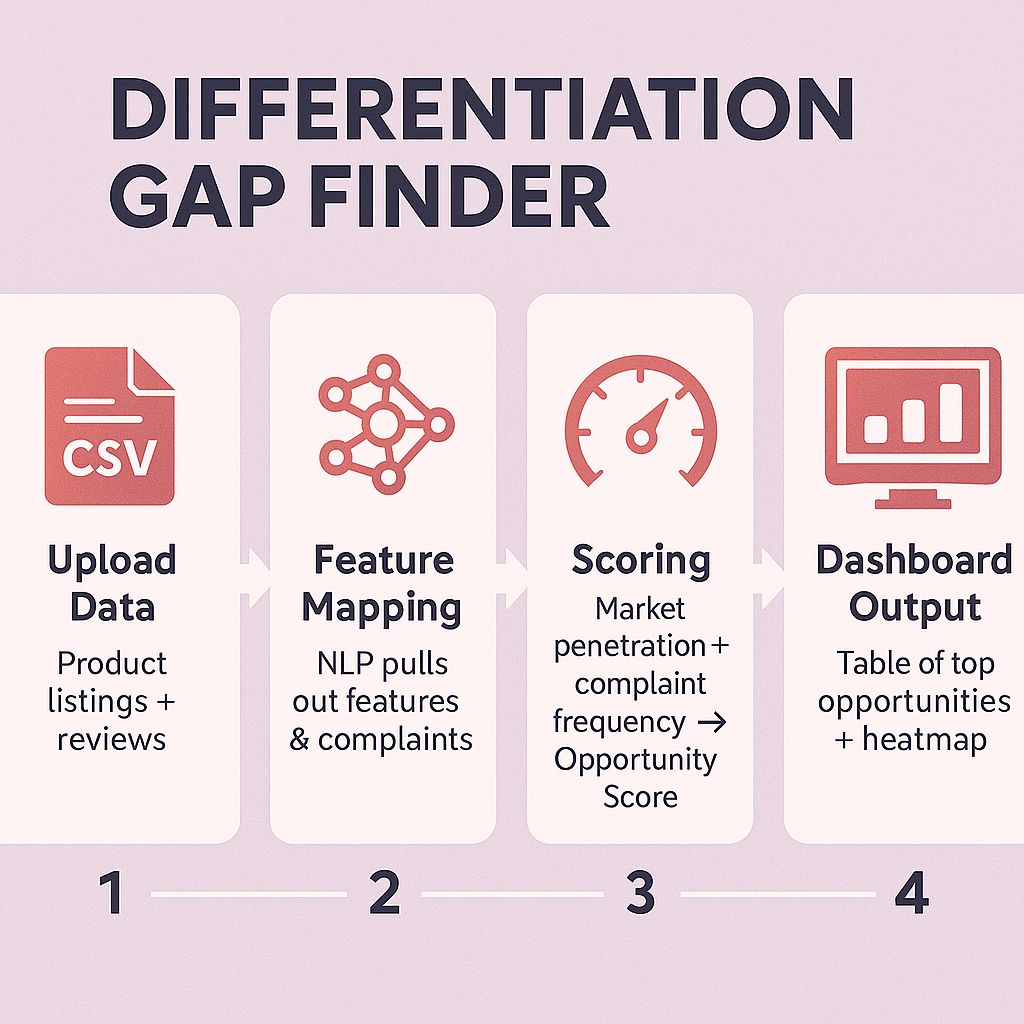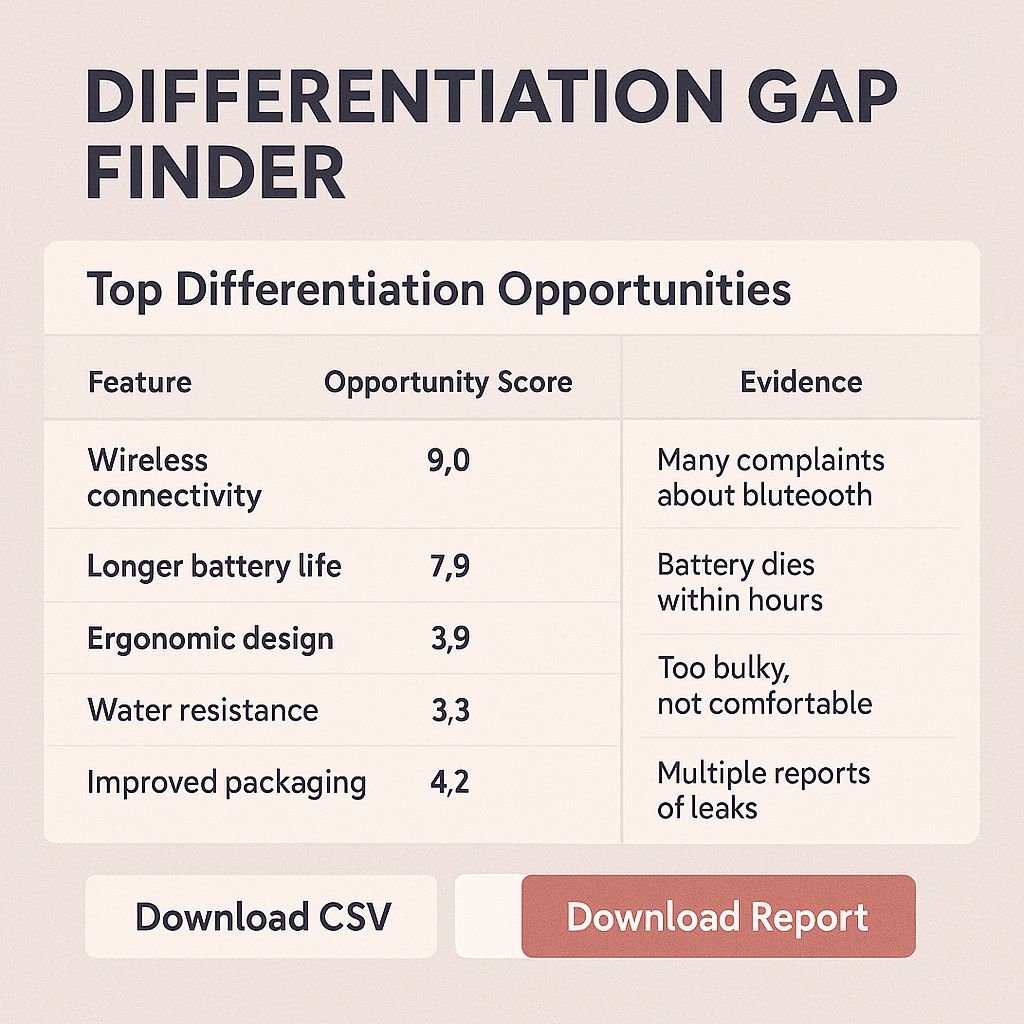- Ecom Product Finders
- Posts
- [EPFN] Creativity Won’t Save You from Bad Deliverables
[EPFN] Creativity Won’t Save You from Bad Deliverables
The genius trap: why visionaries often fail at execution—and how to avoid being one of them.
Welcome to Issue #71 of the EcomProductFinders Newsletter! 🎉

🎭 Are You the Creator or the Process Driver?
Think about this for a second—are you the one who thrives on inventing, building, and chasing big ideas… or the one who finds satisfaction in systems, structure, and making sure every “i” is dotted?
I’ve met some of the most brilliant, visionary entrepreneurs—people whose ideas could change entire industries—and yet, their clients walk away disappointed.
Not because they’re frauds, but because their genius lives in creation, not in routine.
When the founder isn’t the one delivering the service, and there’s no operations-minded partner watching the details, the quality slips.
Deadlines are missed, deliverables get sloppy, and the reputation suffers.
If you’re a creator, that’s your red flag: protect your work by finding someone who will obsess over processes and guard your standards.
Because the truth is, genius without structure doesn’t just get overlooked—it gets buried under bad reviews.

Picture is just for a good VIBE :-) 8/07/2025
Launch Your Amazon Product to $100K+ in Revenue—Fast!
Stack Influence helps you scale your new Amazon product launches into six-figure success stories. Automate thousands of micro-influencer collaborations monthly—no influencer fees, just authentic content paid with your products. Trusted by top brands, Stack Influence boosts external traffic, organic rankings, and delivers engaging UGC, all fully managed so you can focus on growth.
The $80B Market You’re Ignoring
Europe’s online shopping game is exploding.
Amazon pulls in 200 million active users every month, with another 250 million people just sitting there, wallets ready, waiting to be turned into customers.

Amazon Europe gets 1.5 billion visits a month.
Germany and the UK alone raked in almost $80B in 2024—up from $70B the year before.
Only 1% of US Amazon sellers are selling Pan-EU.
The other 99%?
They’re too busy scratching their heads while you could be taking their market share. Bonus—no China tariffs to worry about.
If you want in, I’ve got a friend you can actually trust in Europe—people who know the game and won’t waste your time.
Here’s what HelloTax will do for you:
FREE Expansion to the EU Blueprint report – Send your Amazon store link, website, or product idea, and they’ll tell you straight up if it’s worth it.
Full setup support – VAT, product compliance, logistics, localization, translations… everything handled.
Email “I Want to Expand to Europe in 2025” to [email protected] and see if you’ve got what it takes to play on the $80B field.
Vibe AI Coding: Building Tools That Give You the Edge on Amazon

Most Amazon sellers are stuck using the same generic software everyone else is paying for—and that means they’re looking at the exact same data in the exact same way. That’s why so many products flop: there’s no edge.
Vibe AI coding changes that.
It’s the practice of creating your own custom AI-powered apps to find and validate products in ways no off-the-shelf tool can. You don’t need to be a full-stack engineer to do it—you need the right AI prompts, a clear workflow, and the guts to build exactly what you wish existed.
With vibe coding, you can automate the exact research process you’d normally spend hours on: scraping top competitors, calculating conversion rates, pulling review sentiment, spotting feature gaps, and ranking opportunities.
The difference is that you own the process, you own the code, and you’re not limited to whatever features the big SaaS companies think you need. You can create laser-focused research machines that match your style of decision-making.
For Amazon sellers, this means three things:
No more guesswork – your AI app only shows product opportunities that meet your criteria.
Faster validation – seconds instead of days to confirm if a product is worth pursuing.
Defensible advantage – you’re not chasing the same “Hot Products” list as 10,000 other sellers.
Example: Building a Differentiation Gap Finder with Vibe AI Coding

Let’s take a real, tactical example—building a Differentiation Gap Finder app.
The goal of this app is to scan your competitors’ listings and reviews, then show you exactly which features they’re missing (or doing poorly) so you can design a product that beats them in the areas customers actually care about.
Here’s the three-step build process you can follow:
Step 1 – Define the data you need
Listing info for top competitors (ASIN, title, bullets, description, images, price, reviews, ratings).
Recent reviews for each competitor to spot recurring complaints or “wish it had…” moments.
A feature list that normalizes variations in wording (e.g., “bamboo lid” and “natural bamboo lid” = same feature).
Step 2 – Set up the feature mapping and scoring
Extract product features from titles, bullets, and descriptions using AI prompts.
Group similar features together so you can see how many competitors offer them and how well they execute (strong vs. weak).
Link review complaints directly to missing or weak features.
Step 3 – Rank and visualize opportunities
Score each gap based on market penetration (how many competitors offer it), demand tension (how often customers complain about it), and potential price lift.
Show the top opportunities in a clean dashboard, with evidence and suggested implementation angles.
Output a downloadable report you can send straight to your manufacturer.
The Prompt to Build the Differentiation Gap Finder App
Here’s a ready-to-use builder prompt you can drop into a code-generation AI to create this app from scratch:

Prompt:
“Build a Python 3.11 + FastAPI app called Differentiation Gap Finder. It should:
Use NLP (spaCy) to extract features from listing text, normalize them via a synonyms file, and create a binary feature matrix showing which products have which features and at what strength (weak or strong).
Analyze reviews to identify recurring complaints, map these to missing/weak features, and assign each feature an Opportunity Score = (1 - Market Penetration) * (1 + Complaint Frequency).
Display a web dashboard with:
Top differentiation opportunities with scores, market penetration %, and example review evidence.
A heatmap of products vs. features.
Downloadable CSV and Markdown report of results.
Include CLI support for batch runs and a clear README.md with setup instructions.
Organize code into core modules (ingest, preprocess, features, reviews, scoring, reporting) and keep models lightweight for fast local runs.”
What You Can Do With It
Once built, your Differentiation Gap Finder becomes your personal competitive radar:
Validate product ideas – Before you commit to manufacturing, see if you can realistically beat what’s already on the market.
Spot feature upgrades – Identify the specific features that will make your listing stand out in search results and convert better.
Design smarter – Give your manufacturer a data-backed feature list instead of “gut feeling” changes.
Track competitors over time – Re-run the tool quarterly to see if competitors are closing the gaps or if new ones open up.

The beauty of vibe coding is that this process is repeatable. You can build more apps just like this—Conversion Rate Checkers, Keyword Opportunity Finders, Review Pain Point Extractors—and connect them into your own private AI toolkit.
The result? You stop playing catch-up and start leading in your niche.
While everyone else is arguing in Facebook groups about whether a product is “too competitive,” you’ll already know the exact feature set that wins, the gap in the market, and the numbers to back it up—because your AI app will have told you in black and white.
That’s the power of Vibe AI coding.
It’s not about learning to code for the sake of coding. It’s about weaponizing AI to think the way you do, move faster than the rest of the market, and make your next product launch a calculated hit instead of a gamble.

This Sunday, August 17–19 at 12PM EST — AI Challenge: Turn Data Into Profits
If you’ve ever wished for a repeatable, AI-driven process to find products that actually make money (without the trial-and-error headache),
this 3-day AI Challenge is built for you.
Inside, you’ll get my GPT-5 Product Research Manual in action — not just theory, but live execution. We’ll cover:
The Framework
How to set non-negotiable search filters so GPT-5 only brings you winners.
Price point strategy from low-ticket to high-ticket, with COGS and complexity in mind.
Categories and restrictions to keep you away from Amazon headaches.
Size, weight, and complexity filters that save you on shipping and returns.
The Hunt
How to prompt GPT-5 to pull niche, trending, low-competition ideas using live market data.
Where to pull context from:
AI and tools that will be available for free for all participants
The Validation
Search volume ranges that mean “worth testing” vs “walk away.”
Conversion rate benchmarks for general products vs supplements/skincare.
Competitor review limits and new-seller activity thresholds.
The Differentiation
My Feature Gap Finder method to expose competitor weaknesses.
Review complaint mining to turn customer frustrations into your product’s unique edge.
Demand–Tension Scoring to prioritize what customers want fixed now.
The Launch Plan
GPT-5-generated spec sheets, optimized listings, and review capture plans.
Supplier feasibility checks before you spend a dime.
Risk-mitigation tests like VOC.ai polls and pricing simulations.
By the end of this Challenge, you’ll walk away with:
At least three validated product ideas by you ready to develop.
A tested differentiation angle for each.
A launch roadmap that keeps risk low and profits high.
If you’re ready to use AI like a scalpel instead of a sledgehammer, I’ll see you Sunday.
"Every mess-up is just success in disguise, waiting for the day you’re wise enough to recognize it."
DTS: The Formula That Turns Competitor Failures Into Your Wins
Ever heard of DTS?
That’s the Demand–Tension Score, and it’s my surgical way of deciding which product improvements deserve your time and budget.
The formula is simple but deadly effective: DTS = Complaint Frequency × Average Rating Penalty Weight.
First, you comb through competitor reviews to see how often a specific complaint shows up.
Then you measure how much those complaints drag down their average rating. Multiply those numbers, and you’ve got a heat map of the market’s biggest pain points.
A high DTS tells you two things at once: (1) customers are regularly annoyed by this issue, and (2) it’s costing your competitors real money in lost trust and sales.
That’s your cue to fix the flaw, bake the solution into your product design, and then make sure your listing screams about it—because nothing converts like a feature that kills the number one reason people return or downrate a competing product.

Do you want me to simply simplify the next newsletter?
If yes, reply yes in the email, and if it was understandable and not complicated enough, just give me some feedback. It would be greatly appreciated.
Have a wonderful weekend,
Izabella
